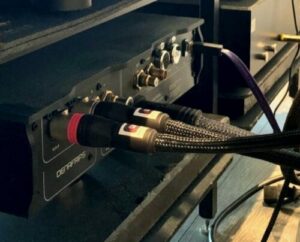 Many of the best video cables on the market today were designed primarily for use in the digital domain. But, can a digital cable perform well as an analogue cable? And conversely, can an analogue cable be used as a digital cable? What’s the difference, anyway, between digital and analogue cables? And as a result ‘Digital Cable and Analog Cables’ article written
Many of the best video cables on the market today were designed primarily for use in the digital domain. But, can a digital cable perform well as an analogue cable? And conversely, can an analogue cable be used as a digital cable? What’s the difference, anyway, between digital and analogue cables? And as a result ‘Digital Cable and Analog Cables’ article written
They both move electrons, don’t they? All of these are interesting questions and bear some discussion. And to begin that discussion, let’s first talk about digital and analogue signals and how they perform in cables. Digital Cable and Analog Cables
Digital Cable and Analog Cables
The first generation of video and audio cables was designed with analogue signals in mind. And, an analogue signal represents the information intended to convey by presenting a continuous waveform analogous to the data. For example, if the information is a 1000 Hertz sine-wave tone, the analogue signal is a voltage varying from positive to negative and back again. A 1000 times per second, in a sine-wave-shaped pattern. And if we could use that electrical signal to drive a speaker cone to move in that same pattern physically, we’d hear tone come out of the speaker.
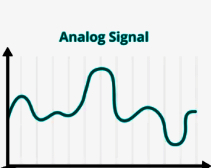
Signals Go Bad
One of the interesting distinctions between digital and analogue signals is that they degrade in different ways. Both are electrical signals carried by a stream of electrons in a wire. And both are subject to alteration by the cable’s electrical characteristics and by the intrusion of outside electrical noise. But while, the alteration of an analogue waveform is progressive and continuous. The more noise introduced means, the more noise will come out of our speaker along with the tone. And the digital signal suffers alteration quite differently. Digital Cable and Analog Cables
First, a digital signal, because of its sharp transitions, is highly subject to degradation in its waveform. And those quick transitions are equivalent to a long–indeed, an infinite–series of harmonics of the base frequency. And the higher the frequency of the signal, the more transmission line effects. Such as the characteristic impedance of the cable, and resulting signal reflections (“return loss”) come into play.
Meaning that while the signal may originate as a square wave, it only sometimes arrives as one. And depending on the characteristic impedance, the capacitance, and the impedance match between the source and load devices. The corners of the square wave will round off to a greater or lesser degree, and the “flat” portions of the wave will become uneven. They are making it harder for the receiving circuit to accurately identify the transitions. And clock the incoming signal. Also, the more degradation in the signal, the harder it is for the receiving device to measure the bitstream’s content accurately.
Digital Signals
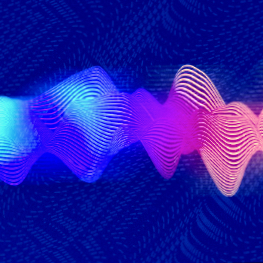
SPDIF digital audio, or HDMI digital video, often employs error correction. And because these formats deliver content in real-time, they can’t use error correction. And there’s no time to re-send data packets that aren’t correctly received. So when digital data are lost, the loss is final. Depending on what is lost, this may result in an interpolation (to “guess” the content of the missing data). An error (where data is misread and the erroneous content is rendered in place of the correct range). Or a total failure (where the signal may disappear entirely for some time). Digital Cable and Analog Cables
Result
The result is that digital signals can be quite robust; they can exhibit no functional degradation at all up to a point. But the difference between the perfect rendering of a digital signal and total loss of signal can be surprisingly small; one can reach a threshold where the digital signal begins to fall apart and, not long after that threshold, find that there is no signal at all. The signal over several hundred feet may be unable to get through at all, even in a damaged condition, when the cable run is lengthened by another fifty feet. And how soon this threshold is reached depends significantly upon the signal and the tolerances of the cable when laid.
The higher the bitrate, the more difficult it is to maintain reliable digital communication; the problem is that the frequencies a cable must carry increase as the bitrate increases. As frequency increases, the wavelength correspondingly decreases. The shorter the wavelength, the more likely it is that a cable of any given length, especially one close to a large fraction (1/4 wavelength is often considered a benchmark) of the wavelength, will start to play a significant role in signal degradation. As this happens, the characteristic impedance of the cable becomes increasingly essential. The degradation of the digital waveform will depend directly upon the impedance match between the source, the cable, and the load. Digital Cable and Analog Cables
Signals Job
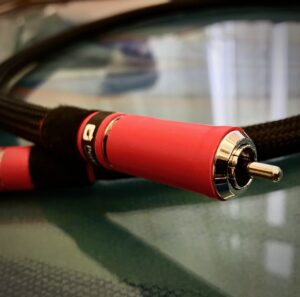
Solution
Solving this problem required cable manufacturers to address every aspect of coaxial cable design, from drawing wire to a more consistent diameter to making the microscopic bubble size in polythene foam more consistent. And figuring out how to structure that foam to prevent the dielectric from distorting when cables flexed. The result is the modern “precision video cable,” with specified impedance tolerance of +/- 1.5 ohms and in-practice tolerance tighter still. And something we have seen the contrast between the consumer digital video standard. HDMI, and the professional standard, SDI HDMI uses nineteen conductors to convey a digital video signal. Also SDI uses one signal conductor and a grounded shield.
The bandwidth of HDMI, and its ability to run dependably over great lengths, ought to be much greater with all those added conductors–right? Wrong. SDI was designed to run in coaxial cable, with that +/- 1.5-ohm impedance tolerance. And can be run hundreds of feet down a single coax without any information loss. Also, HDMI, was designed without any evident consideration of transmission line problems; the HDMI cable is a rat’s nest of shielded twisted pair cables and miscellaneous conductors. And twisted pair cable inherently has poor impedance tolerance. The HDMI spec calls for 100-ohm pairs, +/- 10 ohms, and even that 10% tolerance is hard to achieve in twisted pairs.
Signal loss
Consequently, the signal degradation in an HDMI cable from return loss is enormous. Meanwhile, the need to pack nineteen conductors into small-profile cables results in using small-gauge wire. (Compare the 18-AWG centre conductor of an RG-6 precision video coax versus the 24 AWG or even 28 AWG conductors of a typical HDMI cable.) This small gauge wire, having a high resistance, causes increased attenuation; more importantly, the smallness of the conductors makes controlling impedance harder as close tolerances maintained. In more extensive materials—the result: is a standard which works well at a few feet and rapidly degrades over distance. While HDMI cables are improving, the twisted-pair design’s inherent limitations will always limit HDMI cable performance.
Returning to the coaxial cable world, we can now answer a few questions. Can analogue cables be used in digital applications? Yes, up to a point, but the looser tolerances of older analogue cable designs will limit the run lengths. At least when used in high-bandwidth applications like SDI video. Also, can digital cables be used in analogue applications? And the tight tolerances that make digital cables appropriate for digital applications make them superb for analogue applications.
Improvement
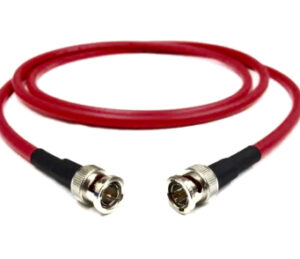
And more oversized cable equals lower loss, right?–think again. Because of efficient dielectric foaming, 1694A can use a more prominent centre conductor in a smaller cable for lower loss. Electrons don’t know whether they’re “digital” or “analogue.” But that does not mean that digital and analogue signals behave alike or that digital and analogue cables are interchangeable. As we look forward to an increasingly digital future, the advantage of using a digital-ready line, even in analogue applications, is apparent. And if you have enjoyed reading ‘Digital Cable and Analog Cables’, please share with friends.
Author: Blue Jeans Cables, Seattle WA 98119. USA
Perkune audiophile cables I professional audio service